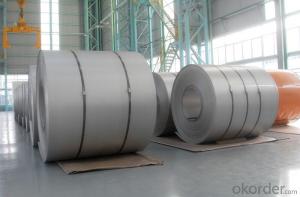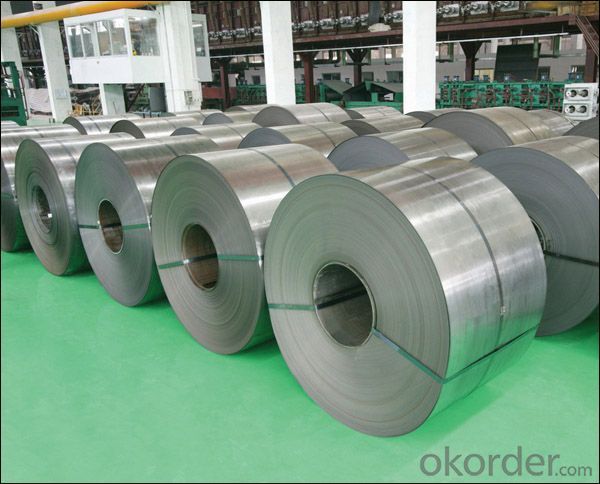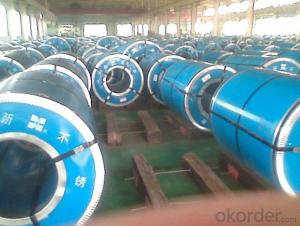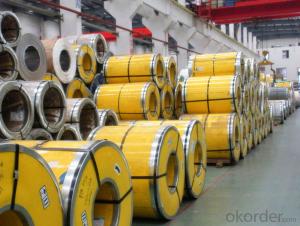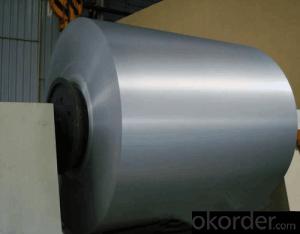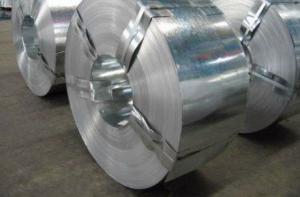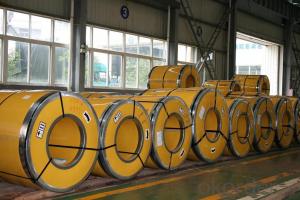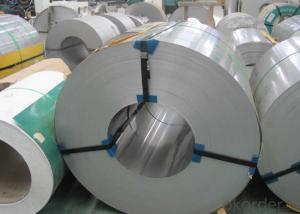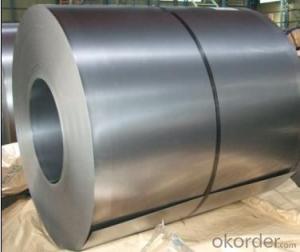430 SERIOUS HOT ROLLED STAINLESS STEEL COIL
- Loading Port:
- Guangzhou
- Payment Terms:
- TT OR LC
- Min Order Qty:
- 100 m.t.
- Supply Capability:
- 10000 m.t./month
OKorder Service Pledge
OKorder Financial Service
You Might Also Like
Quick Details
| Standard: | AISI,ASTM,DIN,GB,JIS | Grade: | 400 series | Thickness: | 0.25-2.0mm |
| Place of Origin: | Guangdong China (Mainland) | Brand Name: | CMAX | Model Number: | SUS430 |
| Type: | Steel Coil | Technique: | Cold Rolled | Surface Treatment: | 2B, BA, HL, NO.4 |
| Application: | Utensils, kitchenware, cutlery, pots & bowls, sinks, gas stove etc. | Width: | 800-1300mm | Length: | As requested |
| Market: | Asia, Mid East, South America etc. | Form available: | coil/ panel/ strip/ sheet | Sample: | Available |
| Packing: | PVC film with wooden pallet | Hardness: | From full hard to DDQ | Edge: | Mill edge/ Slitting edge |
| Feature: | Clean & corrosion resistance | Cr content: | 16%-18% | Steel type: | Ferrite stainless steel |
| Product name: | Cheap Cold Rolled Stainless Steel Coil 430 |
Packaging & Delivery
| Packaging Detail: | Standard export package, pvc film with wooden pallet. |
| Delivery Detail: | 15-30 days after receiving deposit |
Specifications
Cheap cold rolled stainless steel coil 430
Manufacturer
Origin: Baosteel, Tisco, Jisco
High technology & advanced equipment
Product Description
Cheap Cold Rolled Stainless Steel Coil 430 / ss430
| Item name | Cheap Cold Rolled Stainless Steel Coil 430 |
| Grade | 400 series |
| Type | Steel coil |
| Origin | CHINA |
| Standard | AISI,ASTM,DIN,GB,JIS |
| Thickness | 0.25mm-2.0mm |
| Width | 800-1300mm |
| Length | As requested |
| Surface treatment | BA, 2B, HL, No.4 |
| Edge | Mill edge/ slitting edge |
| Hardness | Full hardness to DDQ |
| Application | Utensils, kitchenware, cutlery, pots & bowls, sinks, food industry, construction decorations etc. |
| Package | Standard export package, PVC film with wooden pallet |
| Payment terms | T/T, 20% deposit in advance, balance against copy of B/L |
| Delivery time | 15-30 days after receiving the deposit |
- Q: How do stainless steel strips resist stress corrosion cracking?
- Stainless steel strips resist stress corrosion cracking (SCC) due to their unique composition and properties. The primary factor that enables stainless steel to resist SCC is the presence of chromium. Chromium forms a passive oxide layer on the surface of the steel, which acts as a protective barrier against corrosive environments. This passive oxide layer, also known as the chromium oxide film, is self-repairing and continually forms even if it gets damaged or scratched. It effectively prevents the penetration of corrosive agents, such as chlorides, into the material, thereby inhibiting the initiation and propagation of stress corrosion cracking. Furthermore, stainless steel strips also contain nickel, molybdenum, and other alloying elements, which contribute to their enhanced resistance to SCC. Nickel improves the stability of the oxide layer and increases the overall resistance to corrosion. Molybdenum, on the other hand, enhances the material's resistance to pitting and crevice corrosion, which are often associated with SCC. The microstructure of stainless steel also plays a crucial role in its resistance to SCC. Stainless steel strips are typically engineered to have a fine-grained microstructure, which further enhances their resistance to corrosion. Fine grain size reduces the susceptibility to intergranular corrosion, a common precursor to stress corrosion cracking. In addition to the material composition, surface treatments and finishes can also contribute to the resistance against SCC. Passivation, pickling, or electropolishing processes can remove contaminants and enhance the formation of the protective oxide layer on the surface of the stainless steel strips. Overall, stainless steel strips resist stress corrosion cracking through the combined effects of the chromium oxide film, alloying elements, fine-grained microstructure, and appropriate surface treatments. These factors work together to provide excellent corrosion resistance, making stainless steel strips a reliable and durable material choice for various applications.
- Q: How do you store stainless steel strips?
- To store stainless steel strips properly, it is important to take certain precautions to prevent damage and maintain their quality. Here are some recommended steps to follow: 1. Clean and dry: Before storing stainless steel strips, make sure they are thoroughly cleaned and dried to remove any dirt, dust, or moisture. This will prevent corrosion or staining during storage. 2. Protect from moisture: Stainless steel is susceptible to rust, so it is crucial to keep the strips away from moisture. Store them in a dry and well-ventilated area, away from any water sources or high humidity environments. 3. Avoid contact with other metals: To prevent potential galvanic corrosion, avoid storing stainless steel strips in direct contact with other metals, especially those that are less noble or prone to corrosion. If stacking the strips, consider using separators or protective layers made of plastic or non-reactive materials to prevent direct metal-to-metal contact. 4. Use proper packaging: To provide additional protection, consider packaging the stainless steel strips in appropriate materials such as plastic wrap, paper, or specially designed corrosion-resistant packaging. This will help prevent scratches, corrosion, or other damage during storage or transportation. 5. Organize and label: Properly organize and label the stainless steel strips to easily identify and retrieve them when needed. This will help prevent unnecessary handling and potential damage caused by searching or mishandling. 6. Temperature control: While not always feasible, maintaining a controlled temperature can help prolong the lifespan of stainless steel strips. Extreme temperature variations can cause expansion and contraction, leading to stress and potential deformation. If possible, store the strips in a temperature-controlled environment. By following these guidelines, you can ensure that your stainless steel strips remain in excellent condition and ready for use whenever needed.
- Q: Which stainless steel belt has better elasticity?
- In stainless steel strips, SUS301 has the best elasticity, and is used for springs, springs, or EH, or spring.
- Q: Can stainless steel strips be used in the food and beverage industry?
- Yes, stainless steel strips can be used in the food and beverage industry. Stainless steel is widely used in this industry due to its excellent corrosion resistance, durability, and hygienic properties. It does not react with food or beverages, ensuring that there is no contamination of the products. Stainless steel strips are commonly used for various applications in the food and beverage industry, such as food processing equipment, storage tanks, piping systems, conveyor belts, and kitchen utensils. The smooth and easy-to-clean surface of stainless steel makes it ideal for maintaining high levels of cleanliness and preventing the growth of bacteria. Additionally, stainless steel is resistant to high temperatures, making it suitable for food and beverage processing and cooking applications. Overall, stainless steel strips are a reliable and safe choice for use in the food and beverage industry.
- Q: Are stainless steel strips resistant to scaling at high temperatures?
- Yes, stainless steel strips are generally resistant to scaling at high temperatures. Stainless steel is known for its excellent resistance to oxidation and corrosion, making it suitable for use in high-temperature applications. The presence of chromium in stainless steel forms a protective layer of chromium oxide on the surface, which acts as a barrier against scaling, even at elevated temperatures. This oxide layer prevents the metal from reacting with oxygen or other elements in the environment, thus maintaining the integrity and appearance of the stainless steel strip. However, it is important to note that the specific grade and composition of stainless steel can affect its scaling resistance, so it is crucial to choose the appropriate grade for the intended temperature range.
- Q: What are the different types of edges for stainless steel strips?
- Various types of edges can be used in the manufacturing of stainless steel strips, each fulfilling a specific purpose and application. Some commonly used types of edges for stainless steel strips include: 1. Mill Edge: This edge, which is produced during the manufacturing process, is the most common type. It has a slightly rounded or curved shape, making it suitable for general applications. 2. Slit Edge: By slitting the stainless steel strip into narrower widths, this type of edge is achieved. It is typically a straight edge, although it may have slight burrs or roughness. Industries that don't require precision and tight tolerances often use slit edges. 3. Deburred Edge: To eliminate any burrs or roughness on the slit edge, a deburring process is applied. This results in a smooth and rounded edge, ensuring safety and preventing damage during handling. 4. Rolled Edge: Rolling the stainless steel strip produces this type of edge, which is smooth and rounded. Rolled edges are commonly used in applications where safety and aesthetics are important, such as in architectural and decorative uses. 5. Beveled Edge: A beveled edge refers to an angled or sloping cut made on the edge of the stainless steel strip. It is typically used in applications that require welding or joining, as the bevel facilitates better weld penetration and joint strength. 6. Sheared Edge: This type of edge is achieved by cutting the stainless steel strip with a sharp blade. Sheared edges may have slight variations and irregularities but are suitable for applications where precision is not critical. 7. Custom Edges: Depending on specific requirements, stainless steel strips can be manufactured with custom edges. These edges are tailored to meet the unique needs of the application, such as special chamfers, grooves, or profiles. When selecting the appropriate type of edge, it is crucial to consider the intended use and requirements of the stainless steel strip. The choice of edge can impact the functionality, appearance, and compatibility of the strip with different manufacturing processes.
- Q: Can stainless steel strips be used in brewery equipment?
- Indeed, brewery equipment can make use of stainless steel strips. Due to its exceptional resistance to corrosion, strength, and hygienic properties, stainless steel is widely favored in the brewery industry. Stainless steel strips find their utility in various brewery equipment components, including fermenters, mash tuns, brewing kettles, and piping systems. The extraordinary ability of stainless steel strips to withstand the harsh acidic and alkaline conditions commonly encountered in brewing processes is owed to their high resistance to corrosion and oxidation. Moreover, stainless steel's effortless cleaning and maintenance contribute to preserving the beer's quality and purity. Additionally, the durability and strength of stainless steel guarantee the long-lasting performance of brewery equipment, making stainless steel strips an exceedingly dependable choice for brewery applications.
- Q: Are stainless steel strips suitable for brewery equipment?
- Yes, stainless steel strips are suitable for brewery equipment. Stainless steel is a popular material choice for brewery equipment due to its excellent corrosion resistance, durability, and hygienic properties. Stainless steel strips can be used to fabricate various components of brewery equipment such as fermentation tanks, brewhouses, piping, and fittings. The high resistance to rust and corrosion ensures that the equipment remains sanitary and does not contaminate the brewing process. Additionally, stainless steel is easy to clean and maintain, which is essential for ensuring the quality and consistency of the beer produced.
- Q: How do you clean stainless steel strips?
- To clean stainless steel strips, you can start by wiping them down with a soft cloth or sponge soaked in warm soapy water. For tougher stains or dirt buildup, you can use a non-abrasive cleaner specifically formulated for stainless steel. It's important to avoid using abrasive materials or harsh chemicals as they can damage the surface. After cleaning, make sure to rinse the strips thoroughly with water and dry them with a clean cloth to prevent water spots or streaks.
- Q: Can stainless steel strips be used in the automotive parts industry?
- Absolutely, the automotive parts industry can definitely make use of stainless steel strips. Stainless steel is an incredibly versatile and durable material that offers a wide array of benefits for automotive applications. Its corrosion-resistant nature is of utmost importance in an industry where exposure to varying weather conditions and road salts can lead to rust and deterioration. Furthermore, stainless steel strips possess exceptional strength and impact resistance, making them ideal for structural elements such as chassis and body panels. Moreover, stainless steel strips can be easily shaped, welded, and machined, allowing for customization and seamless integration into diverse automotive parts and assemblies. Thanks to these advantageous characteristics, stainless steel strips are frequently employed in the production of exhaust systems, trim, brackets, fasteners, and various other automotive components.
Send your message to us
430 SERIOUS HOT ROLLED STAINLESS STEEL COIL
- Loading Port:
- Guangzhou
- Payment Terms:
- TT OR LC
- Min Order Qty:
- 100 m.t.
- Supply Capability:
- 10000 m.t./month
OKorder Service Pledge
OKorder Financial Service
Similar products
Hot products
Hot Searches
Related keywords
